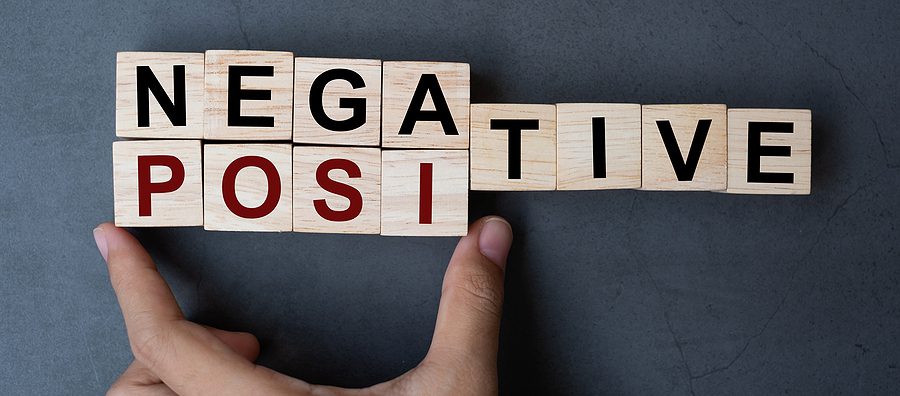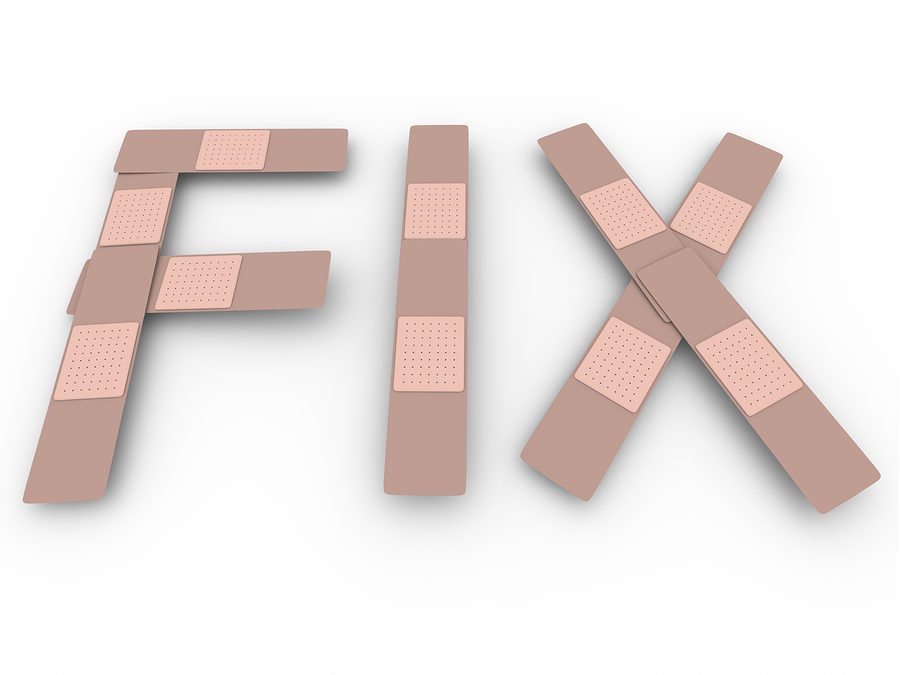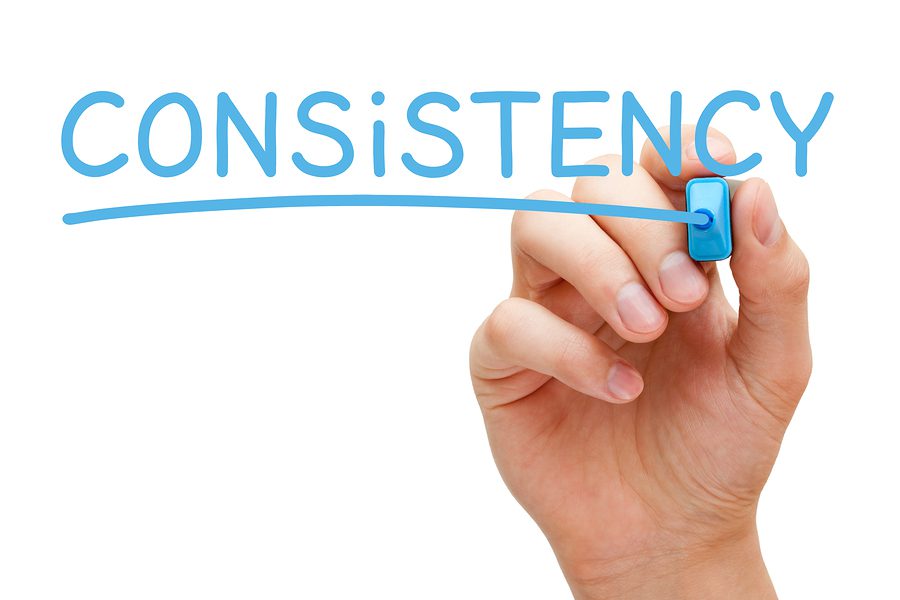
Mar 14, 2021 | Business Distinction, ICONIC, Sales & Retail
We all have customers or prospects who are willing to assume the worst about our intentions. In this time of social media and instant opinions, their criticisms can race around the newsfeeds of our marketplace in dramatic fashion.
Take for example a viral video from 2017 showing a significant amount of food being disposed of at a local Wal-mart store. The video was of an angry man outraged because he felt the food being thrown away could be of good use if it were donated to charitable causes instead.
The problem not mentioned was that a tornado had ripped through the local area days before causing a power outage throughout the community. The food was spoiled and unfit for consumption.
By the time Wal-mart posted the “other side of the story” and their logical and legally mandatory reason for doing what they did, millions had already decided that Wal-mart was not interested in serving the needy in their communities.
- What if Wal-mart would’ve front-loaded this by Tweeting about the food and their commitment to customer safety and health as they were putting the spoiled food in dumpsters behind the store?
- What if they would have contacted local media to talk about what they were doing — and encouraged local citizens to check their own respective freezers and refrigerators to ensure they didn’t eat spoiled food?
In other words, what if they would not have waited to tell their story?
Two important questions you should be considering this week:
- How have you prepared in your business for those customers who assume the worst about you and use the enormous platform of social media to spread their misinformation/disinformation?
- How have you prepared to be proactive in telling your stories about the positive steps that your business is taking?

Aug 16, 2020 | Daily Distinction, ICONIC
If you’re like me, you often find yourself asking, “Where does the time go?” It was all the way back in 1994 that my awesome friend, Antonia Barnes Boyle, and I co-wrote my first book: Just Say — YES! A Step Up to Success.
Now a quarter of a century later (gulp!) with all the negativity spreading with the combined challenges of the coronavirus pandemic, social upheaval, and poisonous political rhetoric that are going on in our country, it’s not just easier to be negative — it seems to have become an instinctive reaction as fear and anger take over our public discourse.
The subtle differences
Fear’s first cousin is anger. Both are nephews of negativity.
Negativity — saying “no” to almost everything — is actually the denial of reality based on a wish for some altered circumstances.
For example, although I appreciated the intent of Nancy Reagan’s “Just Say No” to drugs, her slogan would have been better if it had been “Just Say Yes” to being drug free. The difference is subtle, but telling.
The subtlety lies in how saying “yes” implies a course of positive action—even in the face of negativity—or the “oh, no!” whine. The predictable expletive, “No!” can fill up our time and energy — simply because saying “no” is frequently a commitment to an unproductive struggle that reinforces helplessness and inertia.
Misfortune can have a positive side
And, you know, you can even say “yes” to misfortune. Think about that! Considering how we will positively respond to problems is the prerequisite to overcoming bad things that occur so we can break down our challenges and move forward.
Here’s a hypothetical example that can be applied to a team — or anyone wanting to differentiate themselves from the herd: Let’s say that your marketing budget has been slashed, but your senior management still expects a ten percent growth in net new customers during the next year.
- The “No” approach: You say, “How do they expect us to achieve a ten percent growth, when they have slashed our budget? It’s not fair!”
- Approach number 1 can lead to an unproductive – yes, whiny – group discussion. Hand-wringing gripe sessions abound where everyone agrees that you’ve received a raw deal — and, no, we shouldn’t have to deal with this!
- Would you agree that this approach is a total waste of time?
- The “Yes” approach: You say, “OK, team, here’s the situation. Considering the new budget constraints, what efficiencies in operation and innovative approaches could we take as a team to meet the growth goals — even though they’ll be challenging?”
- Approach number 2 recognizes that there is a big challenge here. The team needs to harness their creativity and be problem solvers instead of negative whiners.
Let’s consider the outcomes:
With the “no” approach, your team leader might be persuaded to go complain to senior management. The results could be that you are either (1) fired — or targeted for layoffs; or, (2) told to do it anyway.
In the latter case, what was accomplished by giving in to the negativity?
The “yes” approach, on the other hand, provides the team a jump-start in solving the problem. It tends to harness a crowd-sourced approach where the results typically exceed the sum of the constituent parts.
People thrive on challenges, and teams who say “yes” are usually the winners who never whine.

Feb 8, 2020 | Current Event, ICONIC
Perhaps it’s because of today’s divided political climate. Sometimes
it seems that true heroes are difficult to find.
Yes, we see stories of individual acts of incomprehensible
bravery. However, it’s exceedingly rare to observe someone display the type of
consistent courage and persistent performance of excellence that one must in
order to be considered as an enduring HERO.
In the past few days, Tammy and I have had the privilege of
spending a few moments with General Chuck Yeager. The General is a big fan of
the Oak Ridge Boys, who are also great friends of ours. The Oaks connected us
during a weekend concert in Laughlin, Nevada. We sat with General Yeager and
his wonderful wife, Victoria at the show, and we joined them with members of
the Oaks for dinner afterwards.
In all candor, we didn’t speak much with him, as he was
naturally focused on his good friends. This post is not to suggest that he
knows what I speak and write about, or to imply anything other than relating to
you the honor we had to share a couple brief, passing moments with the General
and his wife. (And, we certainly appreciate Victoria’s kindness in the
conversations we had with her!)
However, this encounter
certainly has me thinking about the meaning of heroism. For example: is there a
difference between heroism and bravery?
As I’ve pondered it — and it may just be simple
“hair-splitting” semantics — but, it occurs to me that bravery can be displayed
in a single act.
Heroism, on the other hand, is a bit more complex. It’s
found in someone who has been consistently brave, despite the potential
consequences, in a manner that is profoundly inspiring.
And, while you and I can never aspire to shoot down enemy
aircraft, be first to break the sound barrier, or be called the “greatest pilot
to ever fly a plane,” we can set a goal to be consistently, dependably brave at
what we do. Perhaps we could even achieve a small level of heroism.
In the research for “ICONIC,” one of the five factors my
research discovered is that those individuals and organizations who have
attained the highest level of distinction were willing to “play offense.” In
other words, while they knew what competitors were doing, they were committed
to charting their own course.
Consistently, these iconic performers were willing to be
brave enough to follow what their gut, research, and data told them was the
path to success. They weren’t choosing to play the game just like all the
others.
At High Point University, I serve on the “in residence
faculty” with Steve Wozniak, who not only was brave in building a “personal”
computer, unlike those of the time…but continues to inspire with visionary,
“out of the box” thinking. And, another of our group, Marc Randolph, co-founded
a little business called Netflix…and continues to motivate with his investment
of his resources in future disruptive organizations and thinking.
My great pal, Sage Steele of ESPN, has overcome significant
professional and personal challenges to become one of our nation’s most
highly-respected sportscasters and serves as a role model to all in her
industry.
I consider all of these colleagues to be heroic in their own
right.
And, that’s what YOU can become, too. I certainly grant that
you and I may not receive the universal acclaim of General Yeager, Wozniak,
Randolph, or Steele.
However, each of us can reliably display our bravery in how
we stand up for what’s right, break the mold of traditional thinking as we play
offense, expand the experience that we create for customers and colleagues, and
inspire others to perform at their highest level. If we are willing to
consistently do this, it might be considered heroic.
- For what I’ve discovered is that the opposite
of heroism isn’t cowardice.

Oct 27, 2019 | ICONIC, News & Info, Sales & Retail
Watching the news this past week, I couldn’t help but notice
how several members of the House of Representatives were grilling Facebook
founder Mark Zuckerberg on his apparent lack of effort in policing the
political ads for truth and veracity.
You’ll find many people who are bigger fans of Facebook than
me. And, Mr. Zuckerberg as a tech titan and billionaire certainly doesn’t need
help in defending himself against any accusations. However, I do think the
questions posed so aggressively to him illuminate a greater challenge:
- We often attempt to placate the situation and overlook
solving the problem.
As my friends, Mark Mayfield and George Campbell, pointed
out in their daily “FunnierU” posts, perhaps the problem here isn’t that
Facebook isn’t vetting political ads correctly. The real problem is that we
have people who are evidently depending on Facebook for their information.
We see this in businesses all the time. For example, when we
have a dissatisfied customer, we often do what it takes to make her feel
better. “We are so sorry, Ms. Smith — we’ll refund your purchase and give you
10% off your next one with us!”
Don’t get me wrong — we need to do what it takes to ensure
customers are happy they’ve chosen to do business with us. However, the real
problem isn’t the upset client — it’s that something in our process either
broke down or is inadequate to thrill the people who are buying from us. But,
typically, we placate the customer…and move on…leaving the process unaltered.
It’s easier to chastise Facebook than it is to fix the
problem of voter apathy and misinformation. It’s easier to refund or discount
than it is to analyze the process and change “the way we’ve always done it.”
- However, the critical
question is: are we doing the same thing in our business?
The next time someone is dissatisfied — to any degree — with
your products or services, open yourself to going deeper. “Why,” you must ask,
“did this happen? AND, how do we fix the process that created the friction with
our customer?”
It might be that you had a policy in place that was
perfectly acceptable five years ago — and isn’t adequate today. It could be
that employees haven’t been thoroughly trained and aren’t well equipped to
serve in the manner that customers seek.
Don’t be afraid to go negative to root out the issues that
must be examined. I like to call this “positive negativity.” By that, I mean
that by being willing to go negative and seek what’s wrong, we can take the
steps that ensure everything goes right in the future.
- Let’s not settle for the easy way out.
Let’s find a way to resolve the REAL issues instead of
putting Band-Aids on the symptoms.

Aug 24, 2019 | Business Distinction, ICONIC, Leadership
A client and I were recently in a spirited discussion about
a particular speaker/author/seminar leader. He’s someone the client admired –
and let’s say that I do not share his viewpoint.
“You’re just jealous of his success,” my client and friend
said. “He owns his own jet, fancy cars, and makes a lot of money!”
“Do you think he’d make a good friend?” I asked. “Well,
probably not,” my client said. “I sense he doesn’t play well with others. But,
maybe it takes an ego that big – maybe even a bit of narcissism — to be that
successful.”
“I sure hope not,” I replied. Then, I asked, “If you booked
him – or if you were doing business with him…would you trust him?”
Now my client looked at the floor and said, “In fact, no I
would not. Just watching him online or watching his training courses, you can
tell it is all about him. I don’t think I’d trust him to have my company’s best
interests at heart. My guess is that he would think he was doing us a favor,
rather than viewing us as a valued client.”
“And you’ve just nailed why I am not a fan of his,” I said.
- “I would rather be something that clients
trust than someone they envy.”
Seth Godin wrote about this recently. He said, “Earning trust outperforms
earning envy.”
I believe he meant that in every way. Trust
might take the long haul – sometimes outlandish flamboyancy generates quick
results.
However, give me a long
career based on trust than a short career focused on just making a splashy
impression.
At the recent Ultimate Business Summit, we offered that we
could help improve your efforts by 10%. During a webinar, we were asked why we
didn’t say “10X” instead of 10%?
The answer was simple – we knew from experience we could
deliver on our promise. If your business is doing $1,000,000 a year, we
believe that we can easily help you get to $1,100,000. (We’ve had many
participants obtain much higher multiples.)
However, if you’re doing $1m, do you really think a two-day
seminar will get you to $10m? I don’t think that’s possible. Could you go from
$1K to $10K? Maybe. But once the numbers get higher and the participants are
more successful, outrageous promises are just that – outrageous.
For some, promises of ten times results aren’t sufficient,
evidently. This week, I saw a book in an airport bookstore promising “100X
Leaders.” Too bad for you, John Maxwell, Dorie Clark, Mark Sanborn, Barbara
Corcoran, Mike Myatt, and other top leadership authors and speakers. This
book will make leaders one hundred times better! Yeah, right.
- Remember that scene in “Something About Mary” with “7 Minute Abs”? (https://www.youtube.com/watch?v=JB2di69FmhE) It’s like this comedy has now become our reality! It doesn’t matter what you can deliver…just promise more! I had a friend on Facebook write me this week to joke that he now had the title for his next book, “1000X Leaders!”
On a recent podcast I was a guest on, the host mentioned
that going forward, the two most important qualities for professionals will be
transparency and integrity. While we might quibble on whether those are the top
two of all aspects we will need to exhibit to colleagues and customers,
it’s a darn good place to start.
- Focus on being the type of person — and
professional — who builds trust.
- While
you probably won’t get there as quickly, my bet is that you’ll eventually have
the kind of reputation and life that others will envy.

Jul 20, 2019 | Customer Experience, ICONIC
Ups and downs. Ebbs and flows. Good days and bad days. We
have them all because we are all human.
- The problem is, our best days might be our
customer’s worst – and vice versa. That’s why consistency in the delivery of
the experience has to be of primary importance for all of us.
However, it’s also one of the more challenging aspects in
creating distinction.
When we hear about the consistency of any organization,
we’re frequently talking about their product. “A Big Mac is a Big Mac wherever
you are,” is an oft-cited example. Regardless of where you are in the world –
with the exception of left or right-side drive – most models of a particular
brand of car are identical to their counterparts in other nations.
When we tell stories about the customer experience, we often
use over-the-top, ridiculously amazing and unique occurrences about how some
frontline employee moved heaven and earth to help a customer. We seldom use an
example about the experience an average customer receives on the typical
encounter.
In my latest book, “ICONIC,” I
discuss my research that customers evaluate you and your organization based on
only two criteria: promise and performance. It simply asks:
- What does the customer perceive you have
promised them you’ll do?
- How does the customer perceive you have
delivered on the promise you’ve made?
If you make high promises and deliver a high level of
performance, you fit into the “Disruptor” category. Think about those
disruptive organizations who have received significant acclaim in the
marketplace. They’ve made high promises – yet, they’re often recognized for
delivering on those promises on a consistent basis.
To cite an overused example, Uber’s promise was pretty
remarkable on its launch – get from point to point with an app on your
smartphone. You’d see who was picking you up, how they’d been evaluated by
other passengers, what their license plate was and more. While we’ve all
probably had a time or two that our Uber experience wasn’t what we desired,
overall, they have performed on their promise with remarkable consistency.
When you perform with this high
level of consistency, customers tend to blame individual team members
for errors – when your consistency isn’t there, customers tend to blame the organization
for errors.
Check out social media posts if you aren’t sure that
statement is accurate. For example, I’ve noticed that if someone has a poor
experience on American Airlines, they tweet their disgust with the airline. If
someone has an inferior experience on Southwest Airlines, they suggest that the
gate agent must be having a bad day.
This also means that if there’s an extraordinary story about
a flight attendant on American, we tend to discount organizational commitment
to the customer. Instead, we think, “Wow, she’s really terrific.” If
it’s the same story about a flight attendant on Southwest, we tend to think,
“Wow, they’re a great airline and awesome culture.”
In other words, consistent
performance builds your organization a reservoir of goodwill with customers.
If you’re looking to enhance your reservoir, focus less on
extraordinary events that are outliers…and focus more on consistent performance
that delivers on your promises to customers…no matter if you or your team
members are having a good or bad day.






